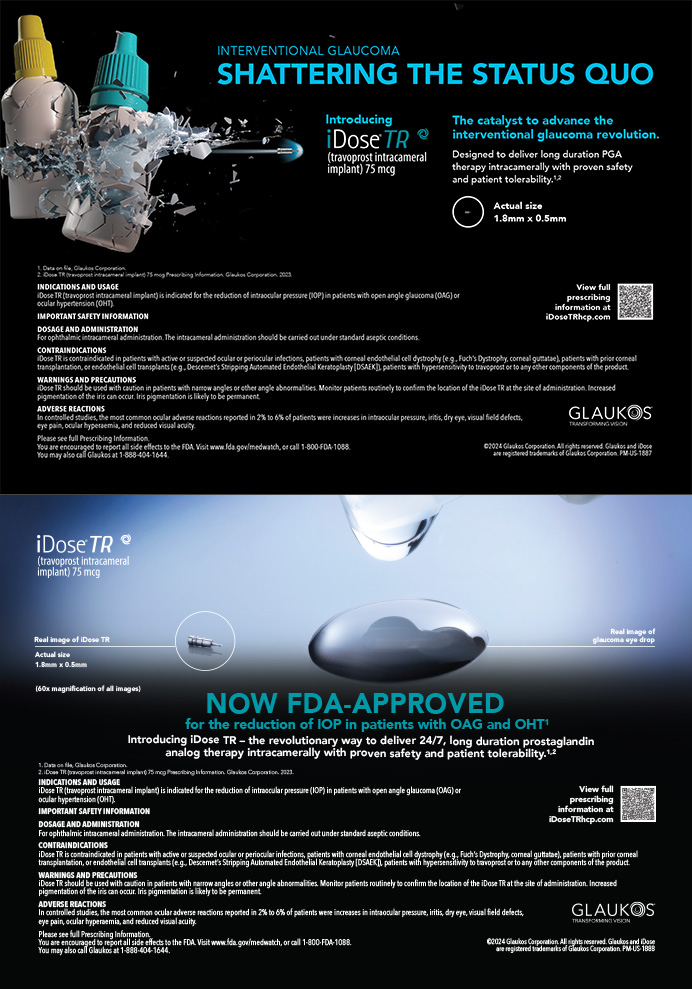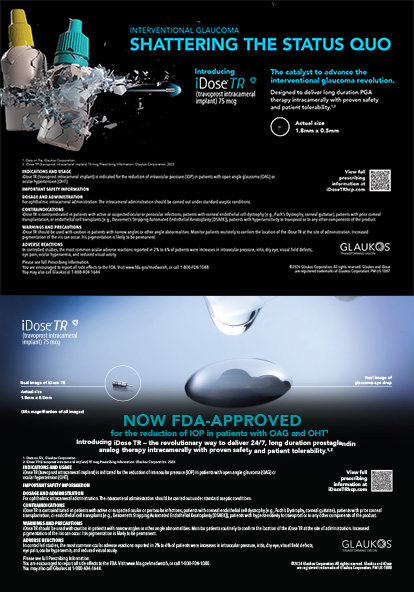
Growing up, I played tennis. Initially, I focused on improving my game by hitting the ball, as hard as I could, 6 inches above the net and 6 inches from the baseline. I still recall losing game after game and not seeming to progress.
My father sat me down and said I needed to work on hitting the same old boring winner. He advised me that the game of tennis is about avoiding unforced errors. He said, "Just get the ball in, and let your opponent lose the point by hitting the ball out of bounds." He told me that the same old boring winner is a nice medium-paced shot that flies 6 feet over the net and lands 6 feet inside the baseline. It is a shot you should make successfully 99% of the time, and if you make this shot after shot, chances are your opponent will wear down and eventually make a low percentage shot that will allow you to win the point.
An analogy can be drawn between tennis and premium cataract surgery. I see myself and so many others being tempted to swing for the fences and place IOLs currently referred to as premium lenses in challenging scenarios. The problem with this strategy is that it increases the risk of an unforced error (including failure to meet patient expectations) dramatically. As much as we may want to place premium lenses in eyes with suboptimal retinal or corneal findings, it may not be the best choice for patient outcomes. Furthermore, having an expensive lens in play may raise patient expectations, making it much harder to satisfy patients in an already challenging situation.
I believe our focus should be on counseling patients on lenses that increase the percentage of success. Over the years, it became clear that the benefits of traditional multifocal IOLs may be lost in suboptimal candidates, and a monofocal or monofocal toric lens gives a better chance of a successful outcome. Newer multifocal IOLs are now available or soon will be available that can increase depth of focus with fewer side effects compared to traditional multifocal IOLs. Many surgeons assume that these multifocal IOLs are indicated for use in complicated situations. I am concerned it may not be apparent that “not contraindicated” does not mean “indicated.” It is currently unclear whether these new lenses will help increase the chance of a successful outcome for our patients.
We all want to expand the premium lens market, and it may seem that less-than-optimal eyes represent the perfect opportunity to do so. I believe, however, there are plenty of healthy eyes that may be better suited for premium lenses and that we should be focusing on them to expand the market. For every patient we treat, we should be using IOLs that make it easier to achieve optimal visual outcomes and meet their expectations.
An extended depth of focus IOL may provide better outcomes in challenging situations, but there is also a chance that its optical characteristic may degrade quality of vision, contrast sensitivity, or BCVA in eyes that cannot afford a reduction in any of these areas. Furthermore, in the age of social media, failed patient expectations can go viral. Our market cannot afford negativity around new products that were originally targeted to expand the market further into healthy eyes.
I believe we have or will have premium lenses that provide an increased chance of success in challenging situations. These IOLs will feature characteristics such as postoperative adjustability, which may help achieve refractive targets; aperture optics, which may help increase quality of vision in aberrated eyes; and exchangeability, which may allow us to change lenses as eye conditions, visual requirements, or technology evolve over time. Extended depth of focus may find a place on this list for certain situations, but we should proceed with caution in this population until proven long-term results are documented. Certain new lenses may achieve better outcomes in compromised eyes, broaden the sweet spot, or be more tolerant to refractive misses. If that is the case, we will genuinely have increased indications that will rightfully expand the premium IOL market into a new patient population.
I worry that there is pressure to use expensive IOLs in suboptimal eyes, and I am concerned that we may hurt the market we are trying to develop. Let's try not to hit the ball as hard as we can, 6 inches above the net and 6 inches from the baseline. The margin of error is too slim and the risk of failing to meet expectations too high. A traditional monofocal or monofocal toric IOL may not be the most exciting option, but it may just be the same old boring winner that allows the best chance of success for our patients and us.




